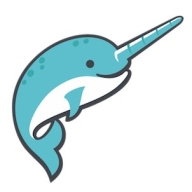

Altair RapidMiner and Dremio are competitive products in the data analytics space. Altair RapidMiner's pricing and support seem more favorable, whereas Dremio's superior features justify its higher cost.
Features: Altair RapidMiner is known for its intuitive visual workflow design, extensive machine learning capabilities, and efficient data processing. Dremio is recognized for its data-as-a-service functionality, accelerated query performance, and ability to easily integrate with various data sources.
Room for Improvement: Altair RapidMiner could expand its cloud capabilities, enhance scalability for large data sets, and improve integration with external APIs. Dremio might benefit from simplifying its learning curve, offering more user-friendly documentation, and refining its customer onboarding process.
Ease of Deployment and Customer Service: Altair RapidMiner features an easy installation process and responsive support services. Dremio focuses on cloud-centric deployment, offering scalability with some complexity, and provides robust support for users experienced in handling large data environments.
Pricing and ROI: Altair RapidMiner presents a competitive setup cost with reasonable ROI, making it accessible for various businesses. Dremio's setup costs are higher, but its advanced features potentially offer significant ROI for data-intensive operations, providing long-term benefits.


Altair RapidMiner is a leading platform for data science and machine learning, offering a user-friendly interface with powerful tools for predictive analytics. It supports integration with APIs, Python, and cloud services for streamlined workflow creation.
RapidMiner provides an efficient data science environment featuring drag-and-drop functionality, automation tools, and a wide array of algorithms, making it adaptable for novices and experts alike. Users benefit from easy data preparation and analysis alongside robust support from a vibrant community. Challenges include better onboarding and deep learning model accessibility, alongside calls for enhanced image processing and large language model integration.
What features make Altair RapidMiner stand out?Altair RapidMiner is extensively used in business and academia, facilitating tasks like predictive analytics, segmentation, and deployment. In education, it supports data science teaching and research, while in industries such as telecom, banking, and healthcare, it's used for data mining, decision trees, and market analysis.
Dremio is a data analytics platform designed to simplify and expedite the data analysis process by enabling direct querying across multiple data sources without the need for data replication. This solution stands out due to its approach to data lake transformation, offering tools that allow users to access and query data stored in various formats and locations as if it were all in a single relational database.
At its core, Dremio facilitates a more streamlined data management experience. It integrates easily with existing data lakes, allowing organizations to continue using their storage of choice, such as AWS S3, Microsoft ADLS, or Hadoop, without data migration. Dremio supports SQL queries, which means it seamlessly integrates with familiar BI tools and data science frameworks, enhancing user accessibility and reducing the learning curve typically associated with adopting new data technologies.
What Are Dremio's Key Features?
What Benefits Should Users Expect?
When evaluating Dremio, potential users should look for feedback on its query performance, especially in environments with large and complex data sets. Reviews might highlight the efficiency gains from using Dremio’s data reflections and its ability to integrate with existing BI tools without significant changes to underlying data structures. Also, check how other users evaluate its ease of deployment and scalability, particularly in hybrid and cloud environments.
How is Dremio Implemented Across Different Industries?
Dremio is widely applicable across various industries, including finance, healthcare, and retail, where organizations benefit from rapid, on-demand access to large volumes of data spread across disparate systems. For instance, in healthcare, Dremio can be used to analyze patient outcomes across different data repositories, improving treatment strategies and operational efficiencies.
What About Dremio’s Pricing, Licensing, and Support?
Dremio offers a flexible pricing model that caters to different sizes and types of businesses, including a free community version for smaller teams and proof-of-concept projects. Their enterprise version is subscription-based, with pricing varying based on the deployment scale and support needs. Customer support is comprehensive, featuring dedicated assistance, online resources, and community support.
We monitor all Data Science Platforms reviews to prevent fraudulent reviews and keep review quality high. We do not post reviews by company employees or direct competitors. We validate each review for authenticity via cross-reference with LinkedIn, and personal follow-up with the reviewer when necessary.